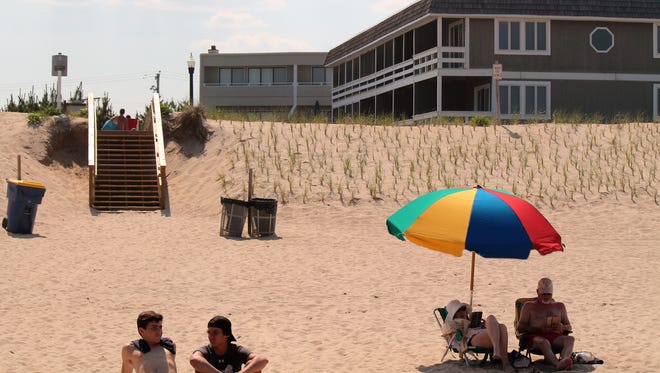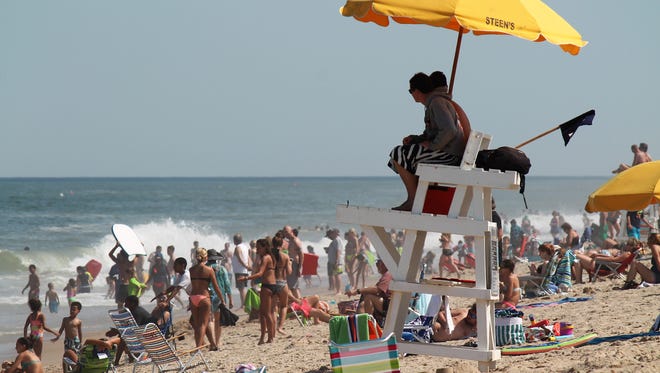Bethany residents updated on beach replenishment efforts

When you live in a coastal town, flooding, mega-storms and beach erosion all matter a lot.
Those very issues are what brought about 60 people from the Bethany Beach Landowners Association out to South Coastal Library on Saturday, June 18 to discuss what the town is doing to protect the homes and businesses from the forces of nature.
Bethany Beach Town Manager Cliff Graviet spoke to the homeowners for about an hour on a variety of topics, including the storms that hit the beach this winter and the erosion the storms caused. The storms washed away a lot of the sand and eroded many of the dunes on Bethany Beach.
The erosion was so severe that there was a question this year as to whether the beach would be wide enough to allow for fireworks, Graviet said during the meeting.
Harry Miller, chief deputy state fire marshal, responded in an email that Bethany did have a problem, but the town moved sand to the launch area that corrected the issue.

“As of this time, their fireworks have not been canceled,” Miller wrote.
Repairing the beach after storms like the ones that hit this past winter is no small task. About a month or so after the storms hit the coastline, the Delaware Department of Natural Resources and Environmental Control came out to Bethany Beach with heavy equipment and pushed sand that was already there back onto the beach and up on the dunes in an effort to repair the damage.
Dan Brower, a program manager with DNREC, said the state was pleased with the amount of sand that it was able to recover following the storm.
“We’re using what nature is giving back to us,” Brower said. “That process is ongoing.”
Immediately following storms such as the ones that hit this winter, DNREC cleans up first and tries to re-establish access points. The sand pushing comes later.

“Nature doesn’t work immediately,” he said. “It takes a period of time for the sand to make its way on shore.”
Generally, it takes about a month, he said.
DNREC tried to get the dunes rebuilt on Bethany Beach before the state’s annual grass planting event in March.
The beach grass that is planted annually helps trap the sand in the dunes during storms, so it helps prevent some erosion.
BACKGROUND: Learn more about beach grass planting in Bethany Beach
During the winter months, Brower explained, beaches generally deflate any way. That means that sand is pulled off the beaches and is washed back into the ocean.
During the spring and summer months, the winds change direction and sand is blown back onto the beaches widening them again. Brower and his team try to work with that natural process, he said.
“It’s going to rebuild,” Bower said. “The beaches will rebuild on their own.”

DNREC will not be back at Bethany Beach this summer to push sand. The state agency is now focusing its efforts on installing 15 miles of sand fencing along Delaware’s coast.
Graviet also spoke to the landowner’s association about the fund the town created to pay for damage should it be hit by a Hurricane Sandy-type storm. Graviet said that many of the coastal towns in New Jersey were hit hard financially because the federal government’s aide did not cover the entire cost of repairing the damage brought on by the storm.
If a mega storm hit Bethany Beach, Graviet said it would cost approximately $8 million to replace the boardwalk, and the Federal Emergency Management Association may only pick up 75 percent of the cost.
The town has set up an emergency fund for such an event, Graviet said. Currently, the fund has less than $1 million in it.
That should come as good news to the approximately 1,100 households that make up the landowners’ association. Many of the members live only part-time in Bethany. The members of the association supported the creation of the emergency fund, said president Tracy Mulligan.